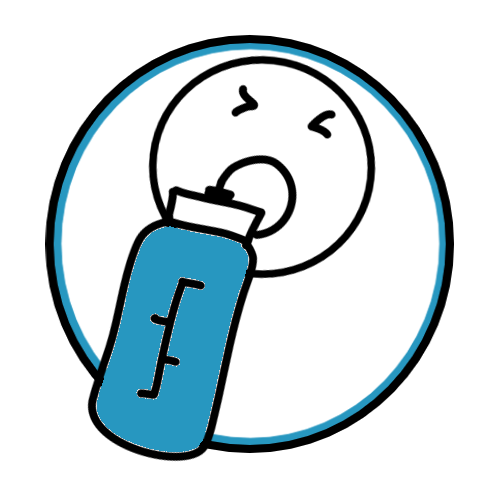If you’re like me, frequently using reusable water bottles, you might have encountered the pesky problem of mold making itself home in your trusty hydration companion. I’ve done my research, so you can save time. In this post, I’ll tell you what needs to be known about mold, the different types, whether they are harmful, and most importantly, how to evict it from your water bottle for good.
This post contains affiliate links and I earn a commission from qualifying purchases at no cost to you. Thanks for your support!
Let’s See What We Are Talking About
Mold is a type of fungus that thrives in damp and humid conditions. It’s that fuzzy, sometimes colorful, stuff you find on various surfaces – and unfortunately, it can take up residence in your water bottle too.
Black, White, Green – What’s The Difference?
Is white mold worse than black? Is white or black more dangerous? Or is it the green we have to be scared of?
Stachybotrys chartarum, commonly known as black mold, is often associated with health issues. Exposure to it can cause respiratory symptoms, skin irritation, headaches, and in severe cases, more serious health problems. Drinking water contaminated with it can potentially lead to these health issues. It’s crucial to address black mold promptly and take measures to prevent its recurrence.
White mold is a broad term that encompasses various species, and not all of them are harmful. However, some can produce mycotoxins, which may pose health risks. If you ingest water contaminated with it, you may experience symptoms such as stomach upset, nausea, or allergic reactions. Individuals with mold allergies or compromised immune systems may be more susceptible to these effects.
Green mold can come from various mold species, and like the white, not all are harmful. However, some green molds may produce mycotoxins too, causing health concerns. Ingesting water contaminated with it may result in symptoms such as gastrointestinal issues, allergic reactions, or respiratory problems. Again, those with mold sensitivities or weakened immune systems may be at higher risk.
Mold In Your Water Bottle Make You Sick
While not every mold is harmful, it’s essential to err on the side of caution. It can potentially cause health issues, especially if you’re allergic or sensitive to it.
If you discover any mold in your water bottle, regardless of its color, it’s advisable to clean it thoroughly to avoid potential health risks.
If you experience symptoms like persistent coughing, sneezing, skin irritation, or respiratory issues after mold exposure, it’s crucial to seek medical attention promptly.
How To Get Rid Of Black Mold In Water Bottle
There is black mold in my water bottle. When I discovered it, I immediately started my research on how to get rid of it. This is what I found out:
Equal parts water and white vinegar can help. You have to scrub the affected areas with a brush or bottle brush using the mixture, ensuring you reach all nooks and crannies. Rinse thoroughly afterward. This should do the trick.
If you’re wondering how to remove mold from the rubber seal on a water bottle, the solution is the same: use vinegar. For those pesky spots in rubber seals, create the same vinegar mixture and soak the affected parts. Use a toothbrush to scrub away the mold, and don’t forget to rinse thoroughly.
Does vinegar kill the mold in the water bottle for real? The answer is yes, yes it does. Vinegar is basically the mold’s worst enemy. Its acidity makes it an effective natural cleaner, capable of eliminating mold and preventing its return.
How To Preven Mold In A Water Bottle
Prevention is the best cure! Ensure your water bottle is thoroughly cleaned and dried after each use, and store it in a well-ventilated area.
So, there you have it – a comprehensive guide on how to bid farewell to mold in your water bottle. If you ever face persistent health issues, don’t hesitate to consult with a healthcare professional.
Cheers!
Shop Related Products:
Related posts:















